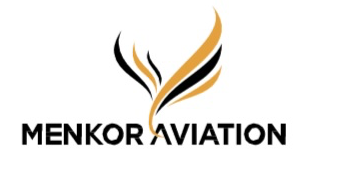
Airbus Unveils Concepts for Hydrogen-Powered Aircraft
Airbus has just unveiled three concepts for hydrogen fueled commercial aircraft. These new zero-emission aircraft could enter into service as early as 2035. The choice of this new clean fuel poses many challenges for the European aircraft manufacturer.
Airbus Bets on Hydrogen to Address the Climate Change
The aeronautics sector is under very strong pressure to reduce its environmental footprint. Although air transport accounts for only 3% of global CO2 emissions according to the International Energy Agency, it is one of the industries most criticized in times of climate change. As France no longer permit airlines to sell domestic trips that could be taken by train and banned advertising for long-haul flights, the aeronautical sector is more than ever under the fire of critics. Along with this, a movement of shame to take a plane (flydskam) is spreading all over the world. Airbus, a leader in the construction of planes alongside Boeing, knows this and is already imagining its planes of the future to meet the climate challenge.
The large European manufacturer sets itself the ambition of developing the world’s first commercial aircraft that would emit zero emissions by 2035. Airbus presented on Monday, September 21, three ZEROe aircraft concepts, for Zero emissions, which would be powered by hydrogen. According to Guillaume Faury, CEO of Airbus, “this is a historic moment for the entire commercial aviation sector, and we intend to play a leading role in the biggest transition that our industry has ever known. Our vision for a zero-emissions future for aviation is bold, and the concepts we unveil today give the world a glimpse of our ambition in this area. “
Airbus bets on hydrogen to replace traditional engines that rely on kerosene, “developing a carbon-free aircraft does not require major technological breakthroughs,” said the president. The company has already used hydrogen propulsion for its Ariane rocket and its satellites through its subsidiary Airbus Defense and Space. Hydrogen is “an option that is showing exceptional promise as a clean aviation fuel.”
Three Hydrogen Powered Aircraft Concepts
Airbus unveiled three ZEROe (Zero Emission Aircraft) concepts of hybrid-hydrogen aircraft:
• The first concept is based on a classic airplane design with two turbojets under the wings. It would carry between 120 and 200 passengers, the equivalent of the current A220 and A320. It would have a range of 3,700 km and could fly from continent to continent on long-haul flights. Hydrogen gas would be stored in tanks at the rear of the plane.
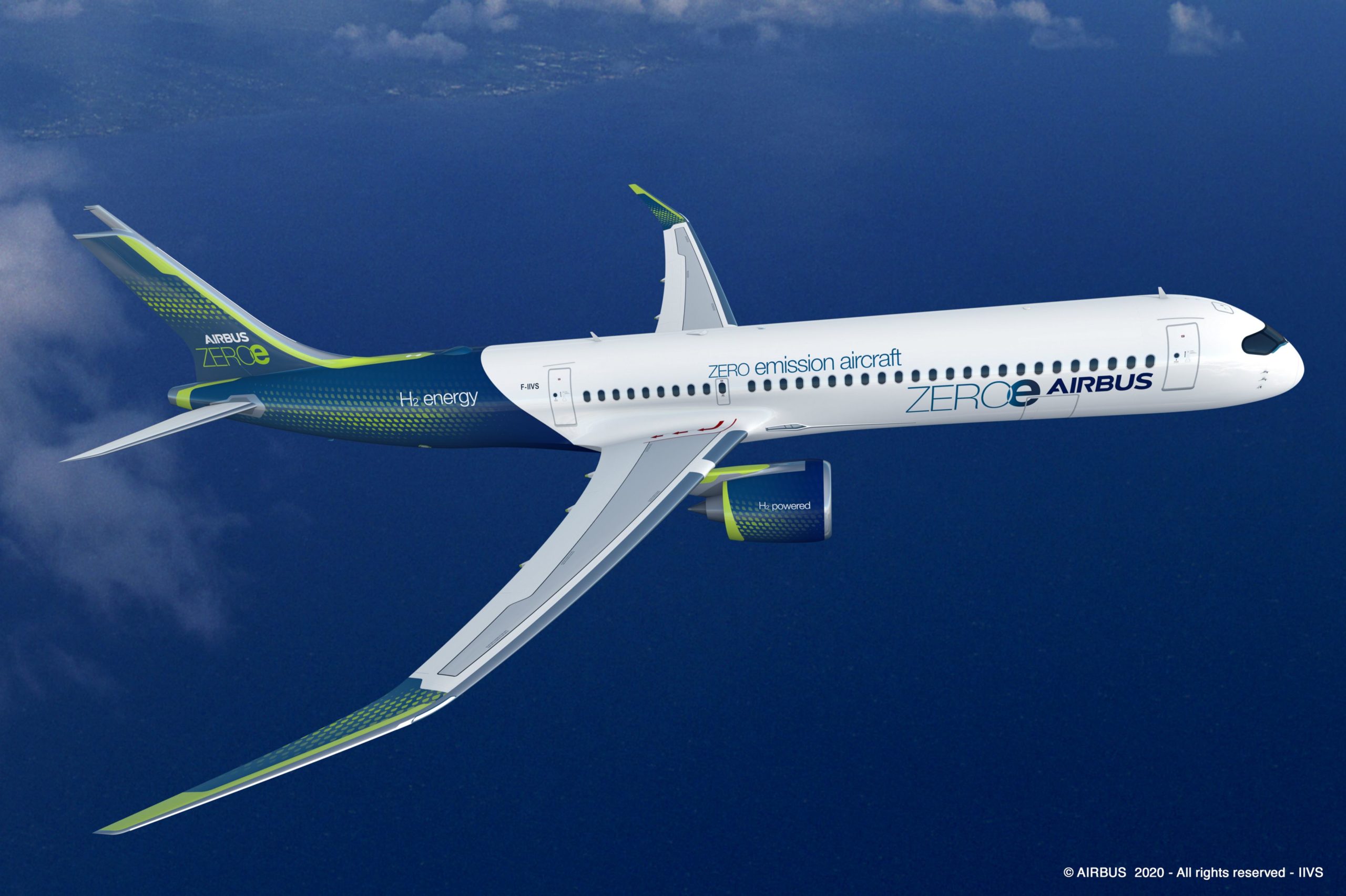
• The second concept is based on a classic design of a turboprop aircraft with propellers. It could carry 100 passengers over a distance of 1800 km (1000 nm). Similar to ATR aircraft, an Airbus subsidiary, this aircraft could connect all cities in Europe and would be ideal for short and medium-haul flights. Hydrogen gas would also be stored in tanks at the rear of the plane.
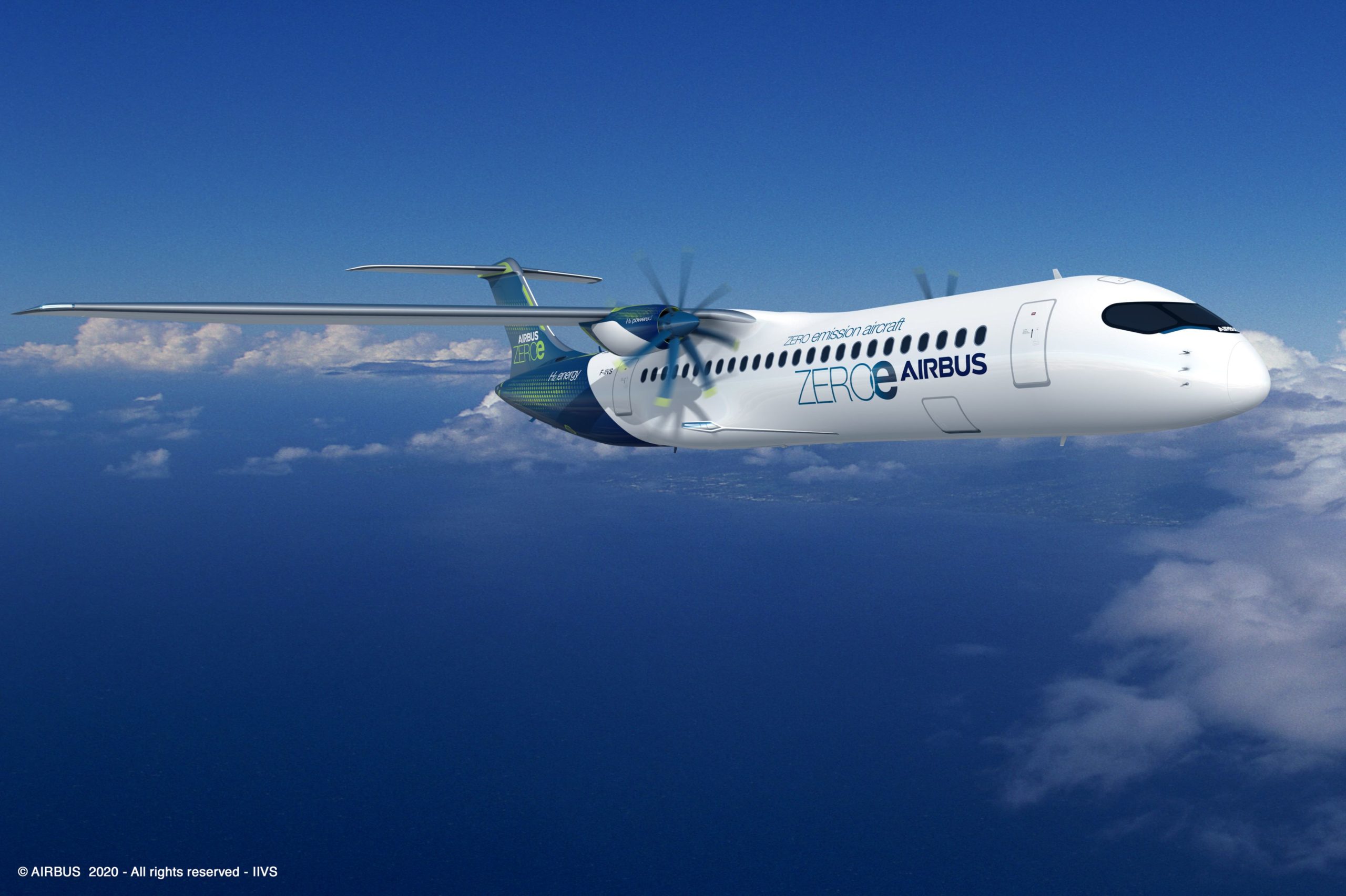
• The third concept is more disruptive. Its flying wing appearance is reminiscent of the Boeing X-48 or the KLM Flying V. This futuristic looking aircraft could accommodate up to 200 people and fly 3,700 km (2,000 nm). According to Airbus, “the exceptionally wide fuselage opens up many possibilities for the storage and distribution of hydrogen, as well as for the layout of the cabin”.
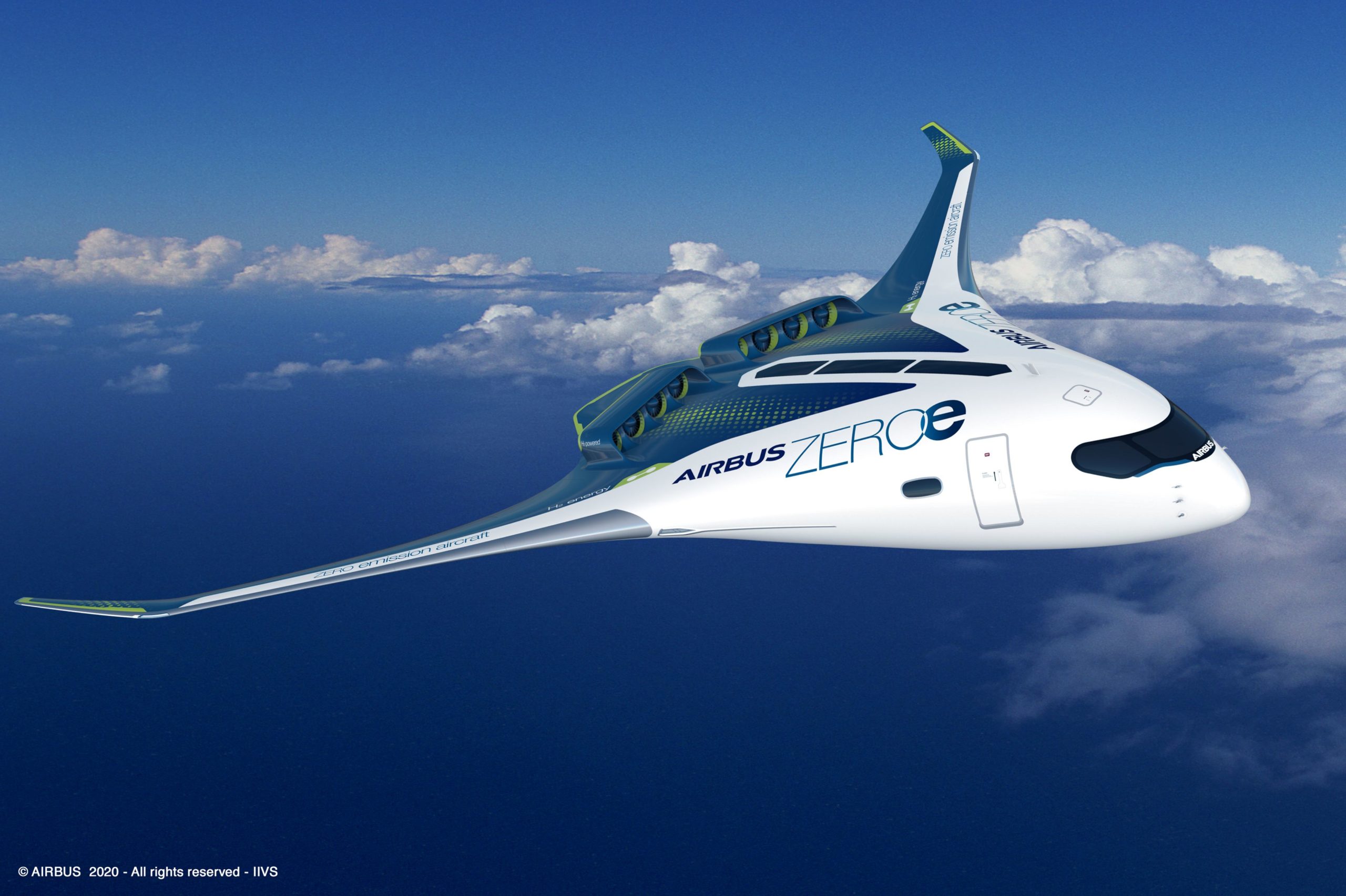
Jean-Brice Dumont, director of engineering at Airbus, specifies on BMF TV that the first two ZEROe concepts with a classic design will probably be the first two that will fly in 2035: “These are developments close to the planes that we make today. The third is more daring, more revolutionary. It’s hard to predict which one will be ready in 2035, but eventually the flying wing will be the plane that can take passengers the furthest. “
How does a Hydrogen Fueled Engine Work?
Airbus engineers simply want to replace fossil combustion with combustion between liquid hydrogen and oxygen. This carbon-free combustion would make it possible to propel conventional jet engines as we know them today. In this case, the engines generate thrust not by burning kerosene but by consuming liquid hydrogen. They would only release hot steam into the atmosphere.
The aircraft manufacturer also wants to use hydrogen to power its planes. Hydrogen fuel cells would complement the turbines to create sufficient electrical energy to power these commercial planes. This hybrid hydrogen propulsion system is seen by Airbus as the best, non-polluting way to power an aircraft and supply it with electricity.
Hydrogen, a Solution for the Future of Mobility
The aviation industry has been questioning itself in recent years as it tries to imagine the clean energy that could power the commercial aircraft of the future. But kerosene is a fossil fuel that the industry is struggling to part with. Its high energy density can power large planes over long distances, production is abundant and it takes up little space to store as it is liquid.
Although aircraft and engine manufacturers have been doing everything to reduce fuel consumption in recent years, the combustion of kerosene emits a lot of carbon dioxide (CO2) and no longer appears to be viable in the near future when the whole world will have to address the climante change. It has become imperative for aircraft manufacturers and engine manufacturers to find an alternative.
The substitutes imagined so far are not much more viable. Bio-fuels emit less CO2 but require a lot of cultivable land to produce them. Likewise, electric power is very promising, but current batteries are heavy and lack the capacity to power large commercial airplanes.
Airbus then bets on hydrogen. As the most abundant element on earth that forms water, it is found in tremendous quantities in oceans, rivers, lakes and even the atmosphere. Hydrogen has a proven track record in the transportation industry to power cars, buses and trains. NASA even used it as early as the 1950s in the form of hydrogen fuel cells to power its space shuttles.
As the methods of extracting hydrogen from water can be very polluting, Airbus is committed to using hydrogen obtained from renewable energies. The project to see aviation more respectful of the environment could therefore emerge with the European manufacturer.
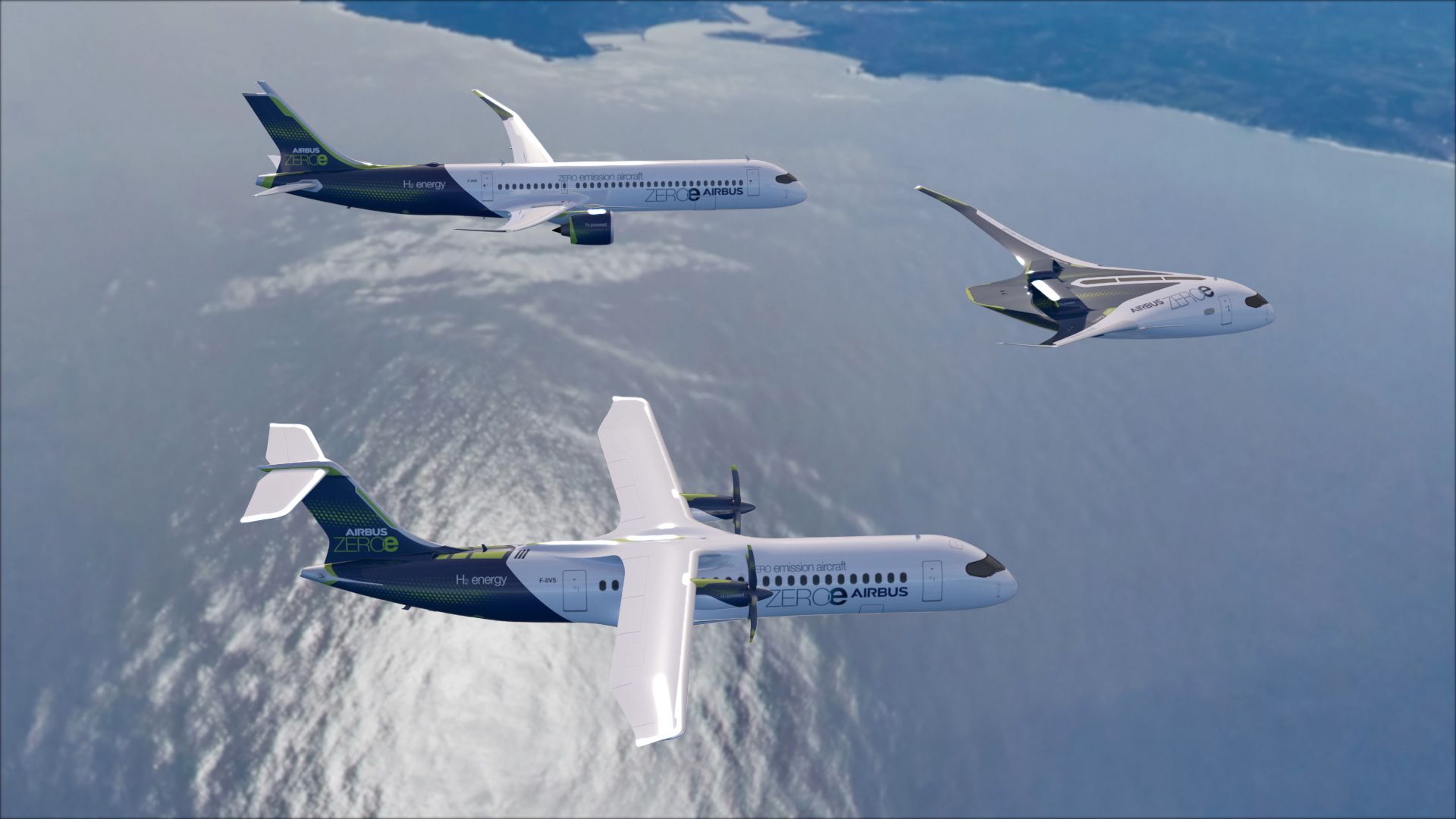
Important Challenges for Future Airbus ZEROe
The main technical constraint of hydrogen is its storage. It must be stored in gaseous form at very high pressure, up to 700 bar. The only tanks capable of withstanding such pressure must be cylindrical or spherical in shape. Hydrogen cannot therefore be stored in the wings like kerosene, but in cylinders at the rear of the aircraft fuselage, this means less space for the passengers. Nevertheless the ZEROe flying wing concept could alleviate the problem, it would allow hydrogen to be stored above or below the passenger cabin. “Hydrogen is light, which is pretty good for aeronautics. On the other hand, it is, for the same energy, four times larger. » specifies Jean-Brice Dumont.
In addition, the hydrogen must be liquid to be transported and injected into the turbines. That is, it must change from gaseous to cryogenic by being cooled to -253 °. Many have also expressed concerns about the process, arguing that hydrogen can be very dangerous for passengers.
The three ZEROe aircraft concepts will be the subject of in-depth studies until 2025 to determine which models are the most relevant. An industrial launch is expected as early as 2028. Grazzia Vittadini, Airbus chief innovation officer, insists: “The demonstrator will allow us to assess which is the most promising architecture. We consider it to be applicable to all Airbus futures products ”.
Likewise, the cost of extracting hydrogen from water is still quite expensive. Airbus is betting on an increase in production and therefore a fall in the price in order to supply its planes.
For the Airbus project to be viable, all aeronautics players will have to get involved. Significant hydrogen production will have to be put in place, airports will need hydrogen transport and refueling infrastructure, public authorities will have to support these objectives with support plans and airlines will have buy these hydrogen-fueled aircraft. “Airbus will not succeed in this project alone” warned Grazzia Vittadini.
The risk of failure is considerable for Airbus. The company retains in particular the experience of the E-Fan X project launched in 2017 in collaboration with Siemens and Rolls-Royce. This collaboration aimed to launch a hybrid electric propulsion system on a regional aircraft in 2020 and had failed.
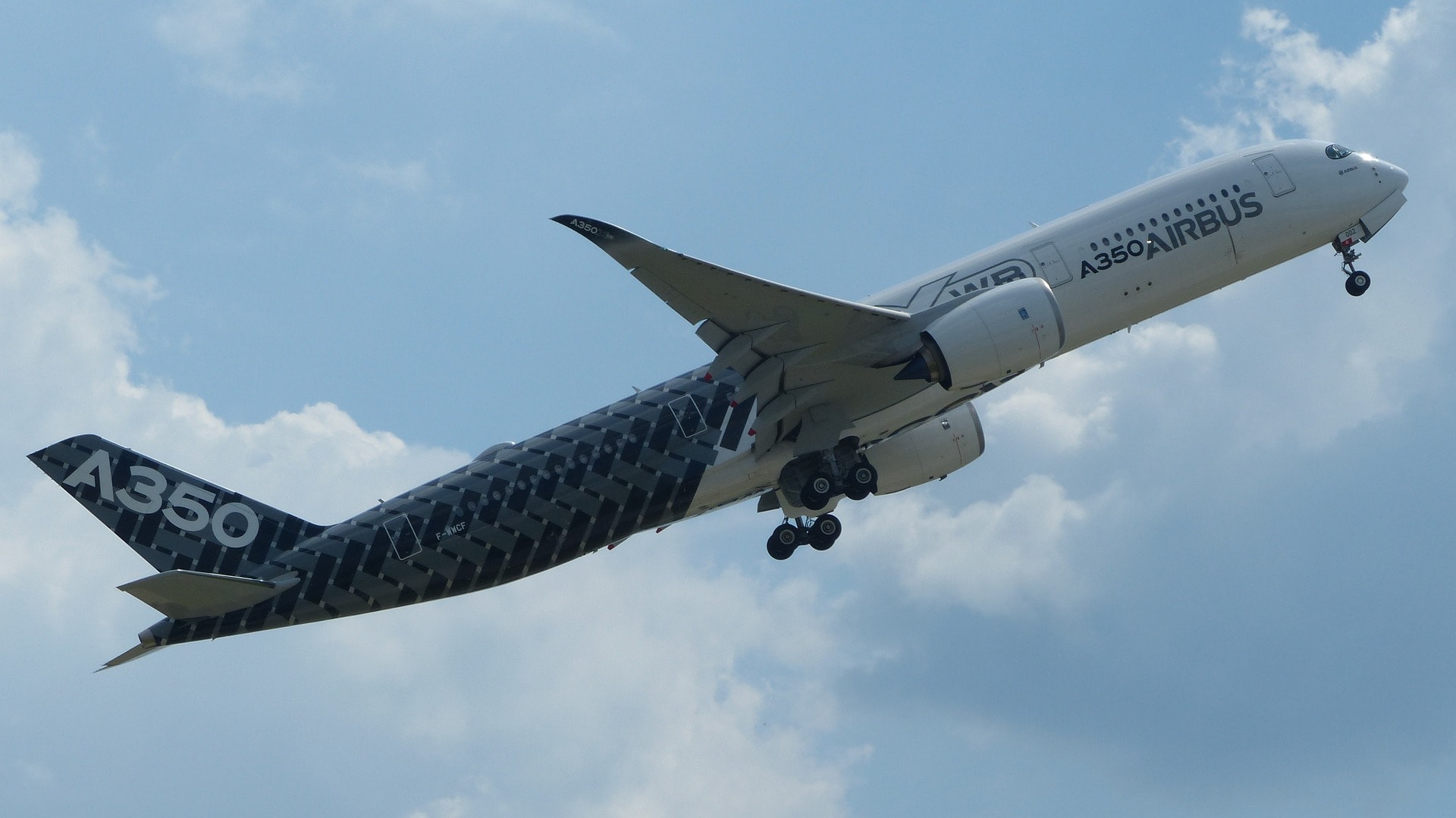
Promising Announcements in Difficult Times
This Airbus ZEROe announcement brings optimism as the aviation industry is going through probably the most serious crisis in its history. Containment and border closures induced by the coronavirus crisis brought global air traffic to a halt for several months. After an annual growth of 5% on average for 20 years and a doubling of the number of passengers carried over the same period, world traffic could plunge by 60% in 2020.
The International Air Transport Association (IATA) and the Airports Council International Europe (ACI) announce a full recovery in passenger traffic in 2024. This situation has a significant impact on airlines. In great financial difficulty, they are forced to ground part of their fleet and postpone or even cancel their orders for new aircraft. Aircraft manufacturers have received no less than 500 order cancellations and some 600 aircraft have seen their delivery postponed. Airbus has reduced its production rates by nearly 40%.
Despite everything, the French government wishes to restart air traffic as quickly as possible and places ecological transition at the heart of the plan to revive commercial aviation. The announcement of the Airbus ZEROe is timely since the French state will donate 1.5 billion euros over three years to the Council for Civil Aeronautical Research (Corac) in order to rapidly develop a low-carbon aircraft.
With news never coming alone, the low-cost airline Easyjet, attracted by these new hydrogen Airbuses, has already announced its intention to acquire them as soon as they enter service in 2035.
